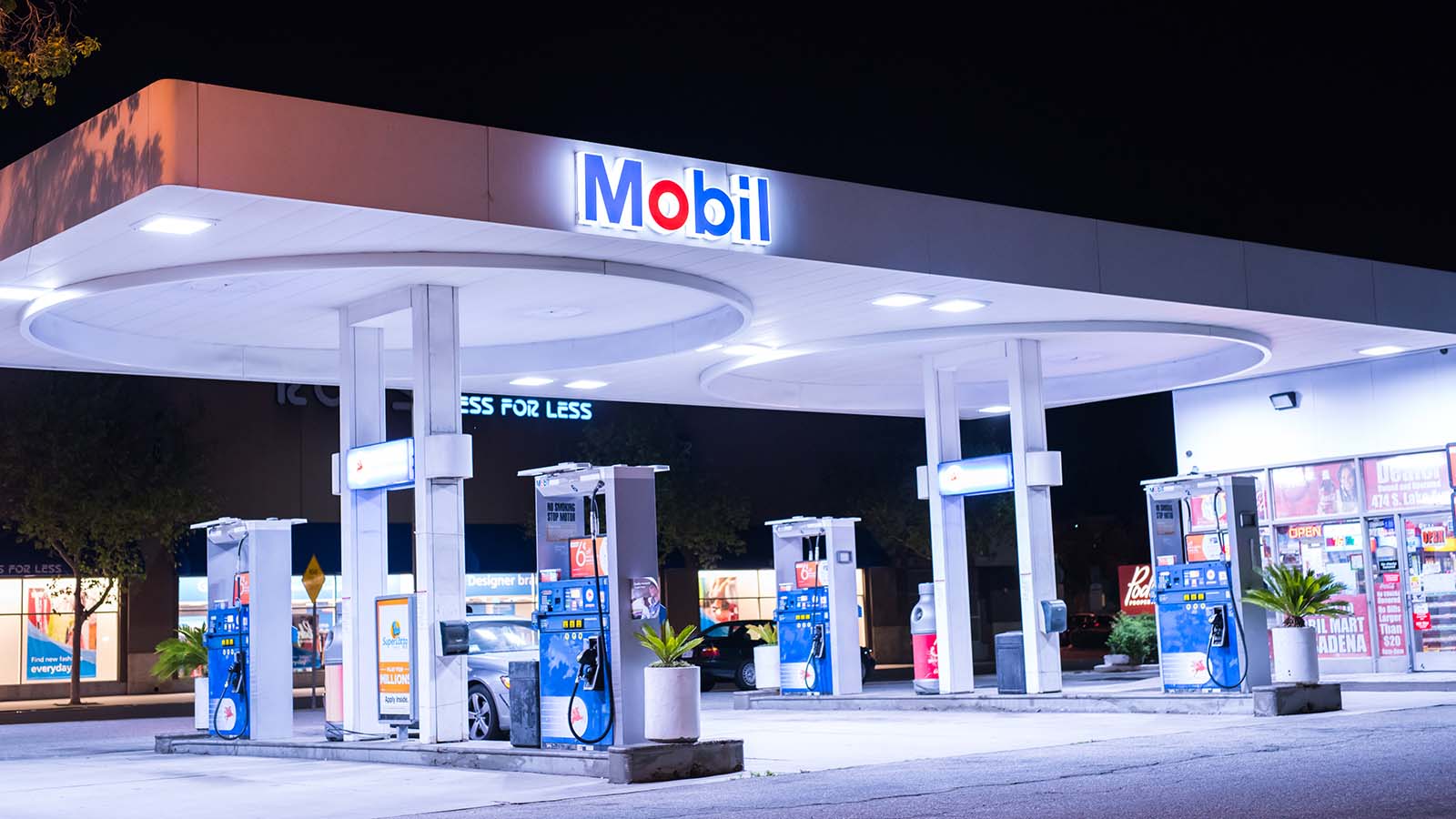InvestorPlace’s Bret Kenwell recently wrote an article about Exxon Mobil (NYSE:XOM) stock entitled By Maintaining Its Dividend, Exxon Mobil Stock Is an Energy Name to Hold.

Bret makes excellent points about why an investor might want to bite into its juicy dividend yield. Now, to be clear, Bret likes to focus on the technical aspects of stocks, so his argument is more about how XOM stock is setting up for a good entry point for investors to benefit from the medium- and long-term rise in oil prices.
If you’re looking beyond tomorrow or the next day, he reckons an 8% yield isn’t a bad reward for taking on above-average risk. He’s absolutely right. It’s the only reason investors are jumping into Exxon Mobil stock right now. It’s akin to a taxi driver getting paid more to drive into a notoriously bad part of town.
If you’re buying into Exxon Mobil because of the dividend, remember that the oil company isn’t continuing to pay its dividend because it’s the right thing to do. It’s doing so because it has to, or its share price will fall back into the low $30s where it traded in the March correction.
To me, Exxon Mobil’s 8.7% dividend yield reeks of desperation. Here’s why.
So Long, Dividend Aristocrats!
In early February, Barron’s wondered if Exxon Mobil would cut its dividend after raising it for 37 consecutive years. To be eligible for the dividend aristocrats distinction, a company must increase its annual dividend for 25 straight years or more. Exxon Mobil’s got 12 years to spare.
My colleague has wondered the same thing.
“The current yield sits at 8% and while somewhat concerning, the company keeps on paying. It may lose its standing as a dividend aristocrat if it fails to raise that payout this year, but simply maintaining it is a feat in itself,” Kenwell wrote on Aug. 20.
“Last quarter, Exxon missed revenue estimates by more than $5.5 billion when it reported $32.6 billion in sales. However, management continues to cut costs and is on the right path, despite the painful environment it’s in right now.”
Barron’s contributor Lawrence Strauss believed the company would raise its dividend for a 38th consecutive year. My colleague is less optimistic, suggesting keeping it level is a plausible scenario.
As Strauss stated in his February article, Exxon Mobil paid out $14.7 billion in dividends in 2019 – from just $3 billion in free cash flow. To keep paying the dividend when it doesn’t have much in the way of free cash flow means it’s got to add more debt to get them paid.
The sad thing is, even if management were to cut or suspend the dividend, long-term Exxon Mobil shareholders are so addicted to their dividends, it would be a tremendous shock to the system. Trading at levels not seen since 2004, it’s the only thing keeping investors from jumping ship.
It has to remain a dividend aristocrat come hell or high water. And that’s a terrible place to be.
Exxon Mobil Stock Says Goodbye to Dow
For those bullish about oil, it was a sad day when the company was bumped from the Dow Jones Industrial Average on Aug. 24, leaving Chevron (NYSE:CVX), its nemesis, as the only oil company amongst the 30-stock index.
My question is, what took so long? The index is supposed to represent the American economy or a reasonable facsimile.
“This represents a combination of the obviously rough COVID-impacted oil price backdrop but also concerns about the eventual peak in oil demand (which had emerged long before COVID) and ESG-related objections to fossil fuels generally,” stated Raymond James analyst Paul Molchanov.
And he’s bullish about the sector.
As far as the Dow goes, Chevron is a much better pick than Exxon Mobil. You’ll get no argument from me over the decision.
So now, Exxon Mobil is out of the Dow. On June 19, 2018, General Electric (NYSE:GE) was dropped from the Dow. GE stock has lost 50% of its value in the two years since. How much will XOM lose over the next two years?
Well, that’s impossible to know.
What we do know is that the company recently announced second-quarter results that showed free cash flow year to date has fallen by 241% to -$4.1 billion from $2.9 billion a year earlier. At the same time, it’s added more than $20 billion in long-term debt and paid out $7.4 billion in dividends.
Even if Exxon Mobil halted dividends, saving it $3.5 billion a quarter, it likely has no reasonable options for investing the funds other than to pay down its growing debt.
When it comes to the dividend, it’s damned if it does and it’s damned if it doesn’t. I don’t see an easy way out for Exxon Mobil.
The 8.7% dividend yield reeks of desperation.
Will Ashworth has written about investments full-time since 2008. Publications where he’s appeared include InvestorPlace, The Motley Fool Canada, Investopedia, Kiplinger, and several others in both the U.S. and Canada. He particularly enjoys creating model portfolios that stand the test of time. He lives in Halifax, Nova Scotia. At the time of this writing Will Ashworth did not hold a position in any of the aforementioned securities.
